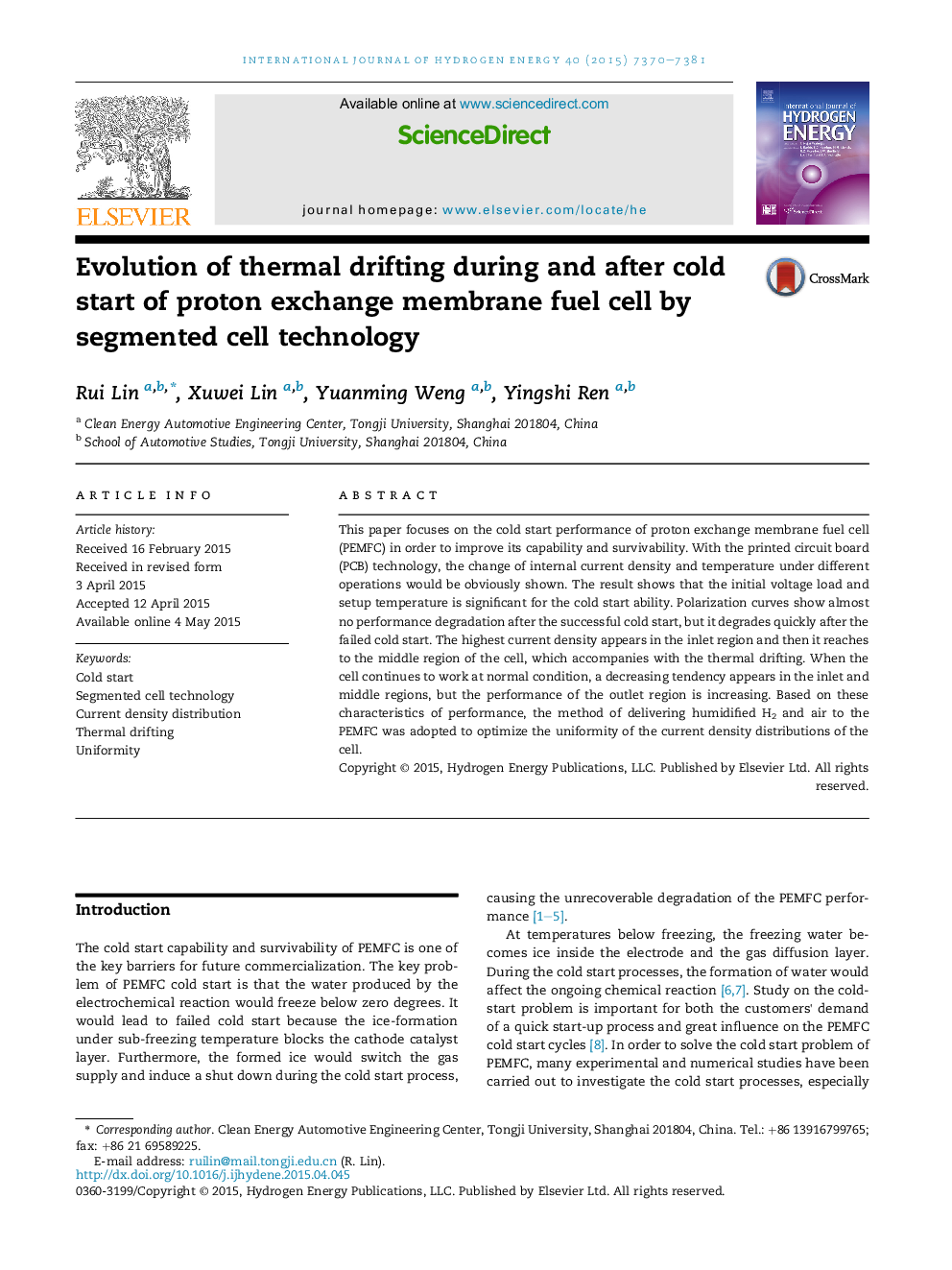| Article ID | Journal | Published Year | Pages | File Type |
|---|---|---|---|---|
| 1270988 | International Journal of Hydrogen Energy | 2015 | 12 Pages |
•The effect of cold start on the performance of fuel cell was evaluated.•Segmented fuel cell was used to record the local changes of the current density.•The delay of reaction and transport of gases was studied by the PCB technology.•Using an optimized strategy to improve the performance after the cold start.
This paper focuses on the cold start performance of proton exchange membrane fuel cell (PEMFC) in order to improve its capability and survivability. With the printed circuit board (PCB) technology, the change of internal current density and temperature under different operations would be obviously shown. The result shows that the initial voltage load and setup temperature is significant for the cold start ability. Polarization curves show almost no performance degradation after the successful cold start, but it degrades quickly after the failed cold start. The highest current density appears in the inlet region and then it reaches to the middle region of the cell, which accompanies with the thermal drifting. When the cell continues to work at normal condition, a decreasing tendency appears in the inlet and middle regions, but the performance of the outlet region is increasing. Based on these characteristics of performance, the method of delivering humidified H2 and air to the PEMFC was adopted to optimize the uniformity of the current density distributions of the cell.
